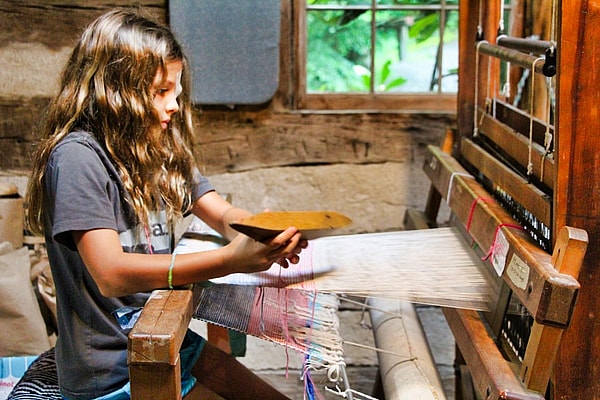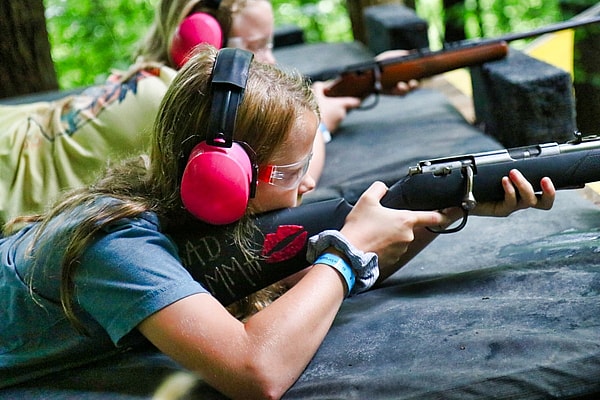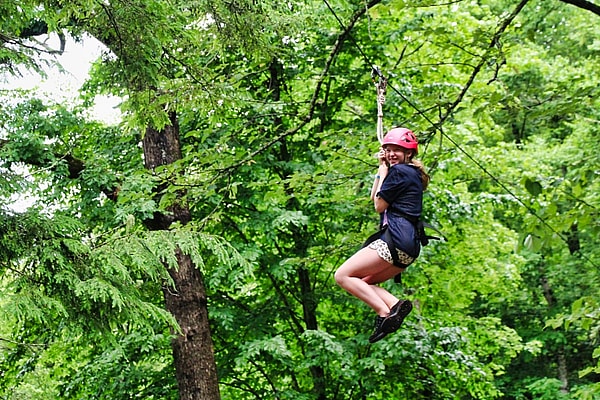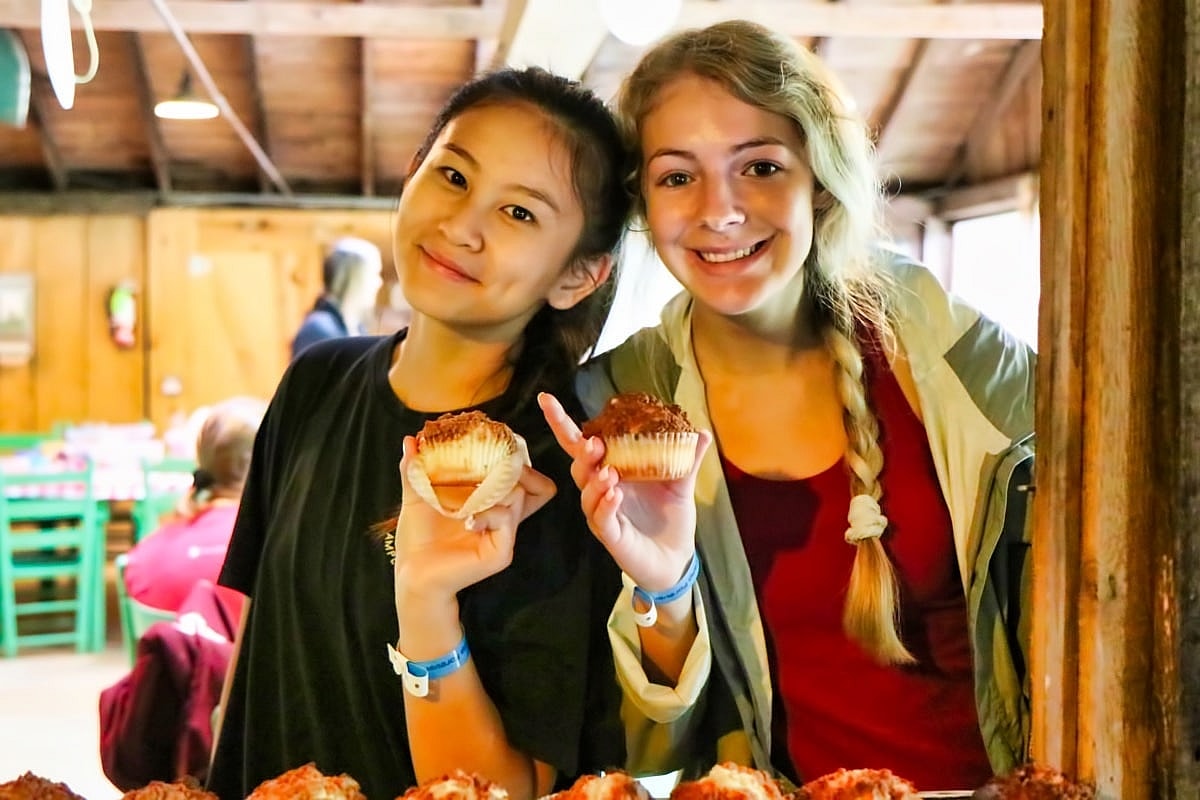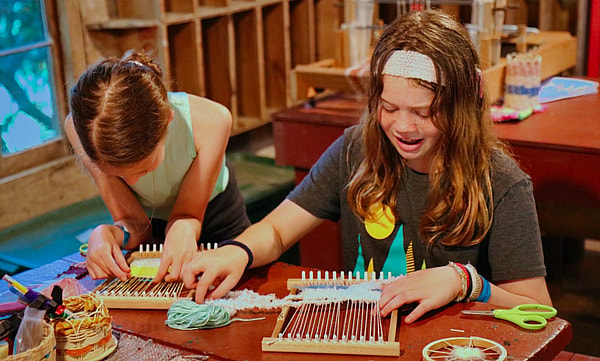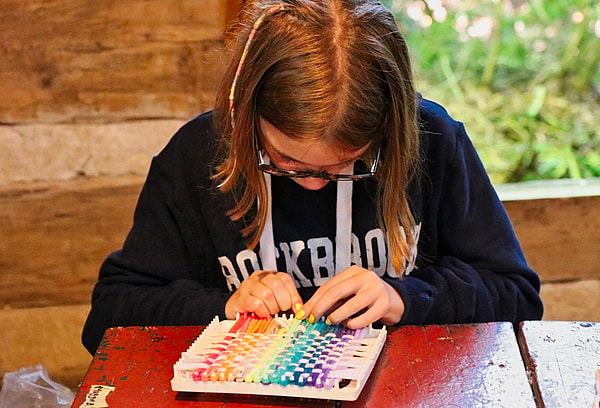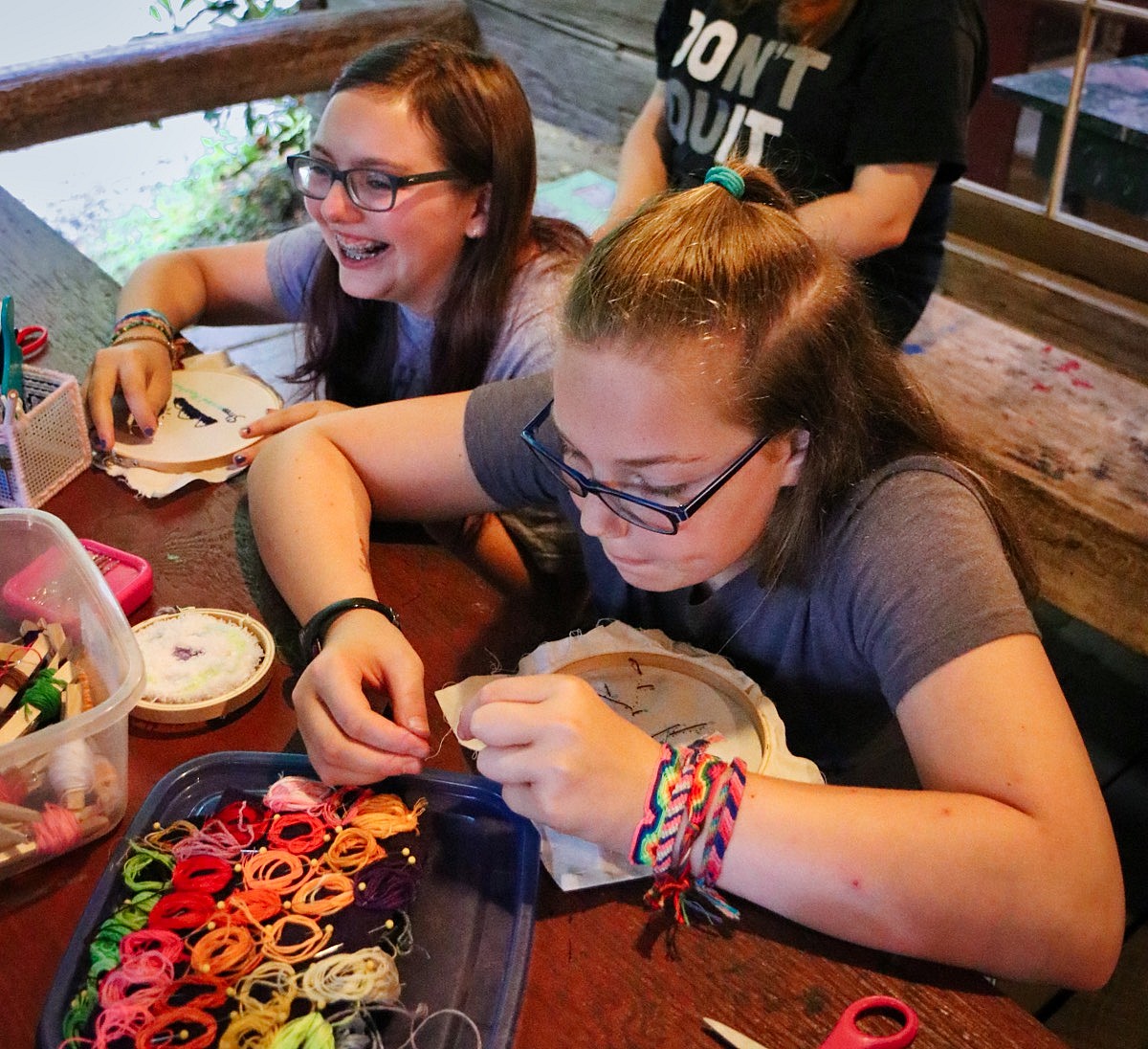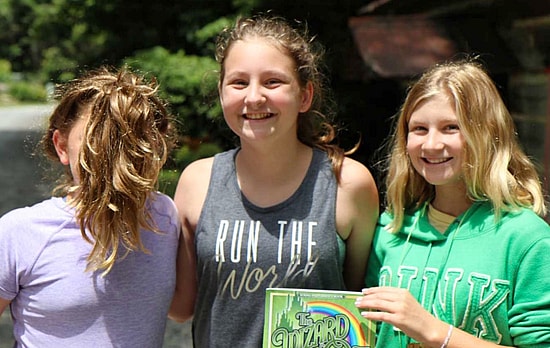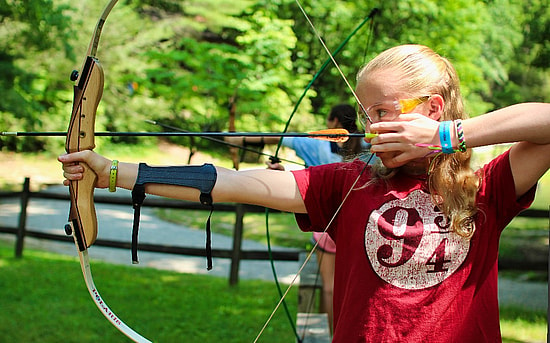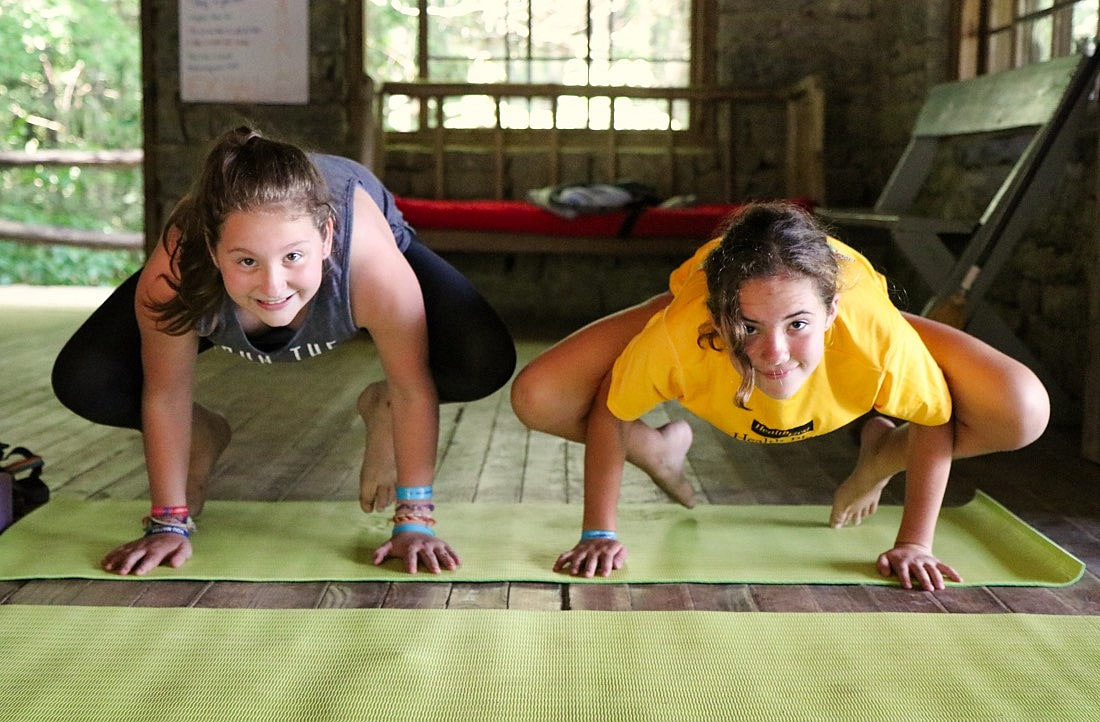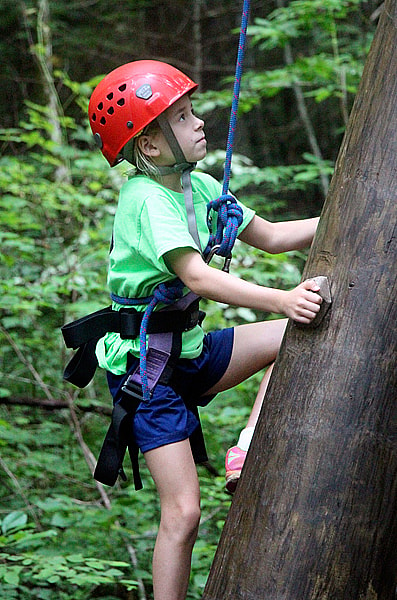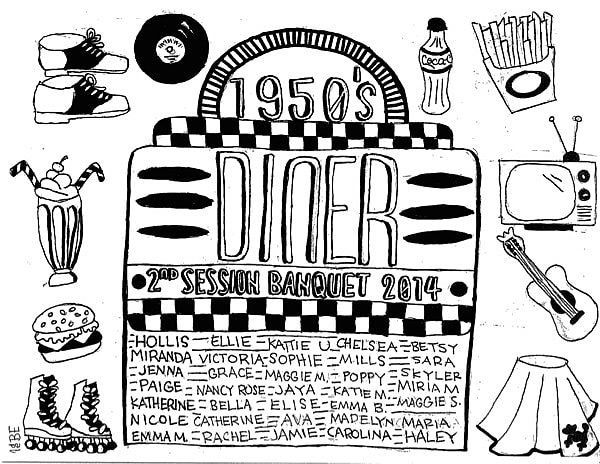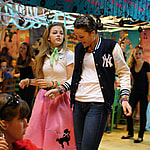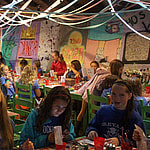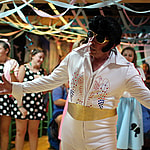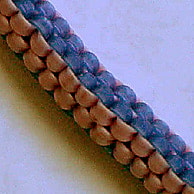Let’s get right to the activities! That’s what every girl at camp was thinking as we finished breakfast this morning. Soon, counselors and campers alike filled every corner of camp with enthusiastic action. Amazing complex weavings seemed to spring from the looms in no time. Clay sculptures, friendship bracelets, decorative paper calendars, and small paintings became creative realities. Sports too! Girls learned about firing rifles, shooting arrows and hitting tennis balls. The lake was busy all day despite some lingering drizzle parts of the day. The horseback riding staff taught their first mounted lessons. The adventure staff took girls on a hike to see a nearby waterfall and several groups flew overhead on the Rockbrook zip line course. The performing arts staff introduced new songs, and our Yoga instructor taught girls their first poses and relaxation techniques. It was an impressive eruption of camp life!
During their free time— three different 45 minute blocks —the girls enjoyed freshly baked muffins as a mid-morning snack, waterslide rides and diving board tricks at the lake, for some a chance to walk or run “Charlotte’s loop,” and games of gaga ball, more tennis, and even more tetherball. After dinner, the sun was practically blinding as groups of girls sat on the hill to watch an amazing, cloud-marbled sunset.
What a luxury to have this kind of free, unhurried, self-directed time! When the rest of the year is often completely scheduled, camp gives girls a chance to decide for themselves what they’d like to do. They (not their parents) select their camp activities. They (not their teachers or coaches) decide how to spend their time. Camp provides extraordinary opportunities to play, and exactly the right kind of encouragement to try new things at each girl’s individual pace. If you’ve ever wondered how to inspire children to be more independent and self motivated, this is it. You give them a real chance to do things on their own! Camp supports and empowers kids in this way, and it can make a big difference for them long after the closing campfire.
Of course, we’re just getting started. Everyone is settling in nicely at camp, making quick new friends as we share this time together in “the heart of a wooded mountain.” Take some time to browse through the photo gallery and you’ll see what I mean. Meanwhile, let’s us know if you have any questions, or better yet, write your camper a letter or an email. She’ll love it!


